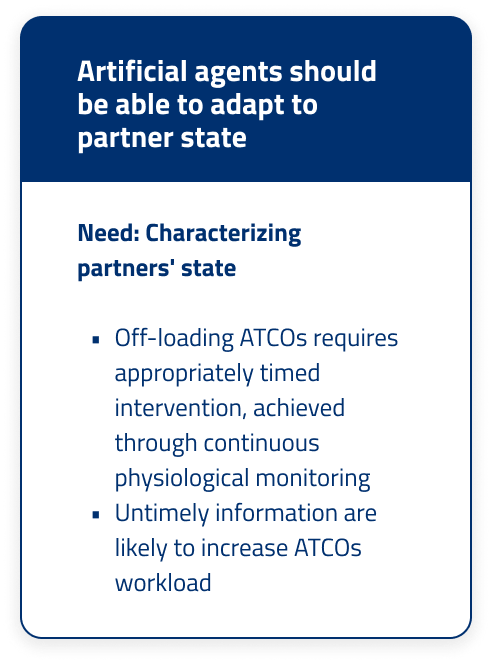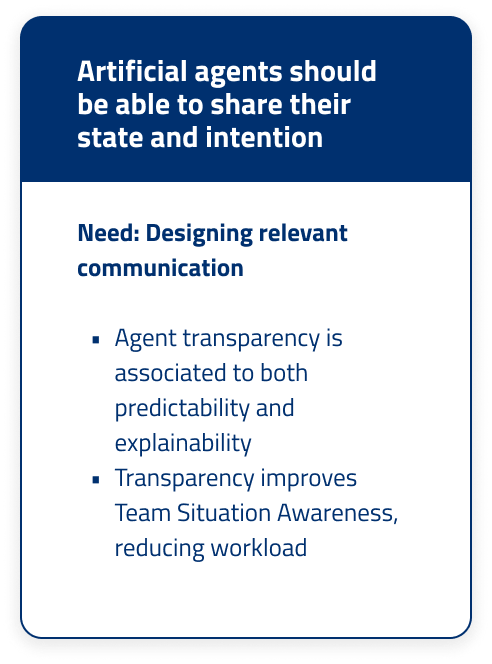About
Context and Motivation
Autonomous agents are introduced in many tasks to discharge ATCOs in their activity. Being able to coordinate with them is crucial, especially when facing unanticipated events (such as alarms, pilot requests, emergency situations, etc.). To prevent this coordination from inducing additional workload and complexity it is essential to rely on a human centric approach based on human-autonomy teaming and explainability models, as well as physiological state monitoring.
DIALOG will design an assistant that helps ATCOs respond to pilots’ requests in an efficient collaboration-promoting manner.
Methodology
DIALOG Framework
KEY CHALLENGES FOR MAKING AUTOMATION A TEAM PLAYER
‘If not well managed, the introduction of AI in ATM will add complexity to an already complex system’



DIALOG’S SOLUTIONS
